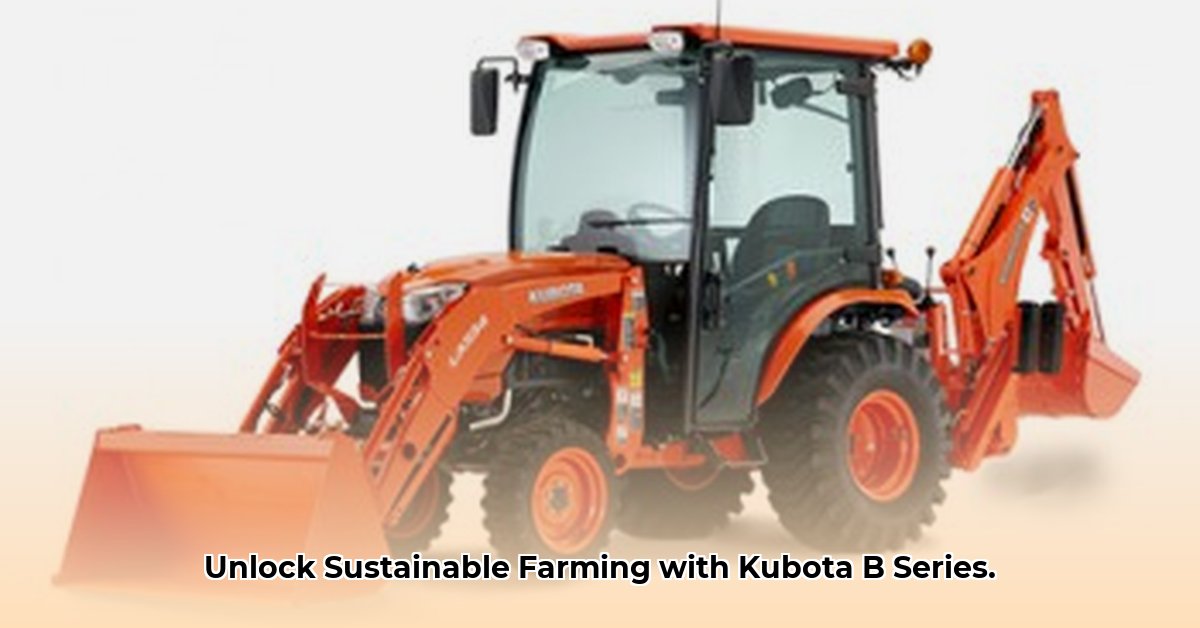
Choosing the right tractor is crucial for success in sustainable farming. Kubota's BX and B series tractors offer distinct advantages, making the selection process critical. For more information on Kubota's tracked tractors, see this helpful resource: Kubota Tractors with Tracks. This guide compares these models to help you choose the tractor that best supports your long-term goals.
Kubota BX vs. B Series: Finding the Perfect Fit for Your Farm
The Kubota BX and B series aren't simply different sizes; they're designed for different applications and acreage. The BX series is perfect for smaller properties, while the B series is built for larger operations and more demanding tasks.
Factors to Consider When Choosing
Several key factors influence your decision:
Land Size: A few acres? The BX series is likely sufficient. Managing dozens of acres? The B series provides the power and capacity you need. Consider future expansion, too.
Type of Work: For simple tasks like mowing, the BX series excels. However, heavy tillage or running larger implements necessitates the B series' greater capabilities.
Budget: B series tractors cost more due to their enhanced features. Carefully weigh the added capabilities against the increased expense.
Sustainable Farming with Kubota: A Greener Approach
Sustainable practices are essential in modern agriculture. Both BX and B series tractors contribute to this goal. The B Series, with its increased power, enables precision farming techniques, leading to reduced waste. Both offer fuel-efficient diesel engines, minimizing environmental impact and reducing long-term costs. The BX series' compact size minimizes soil compaction, a crucial factor for healthy soil.
Did you know? Fuel-efficient diesel engines in Kubota tractors can reduce fuel consumption by up to 15% compared to older models, contributing to reduced operational costs and a smaller carbon footprint.
"The efficiency gains from the precision farming capabilities of the B series are significant," says Dr. Emily Carter, Agricultural Engineering Professor at the University of California, Davis. "Reduced waste translates directly to lower costs and a lighter environmental burden."
Comparing Kubota BX and B Series: A Detailed Look
This table directly compares key features:
| Feature | Kubota BX Series | Kubota B Series | Sustainable Farming Implications |
|---|---|---|---|
| Horsepower | Lower (typically 18-26 hp) | Higher (typically 22-49 hp+) | Affects fuel efficiency and the scale of operations you can handle. |
| Lift Capacity | Lower | Significantly Higher | Impacts implement choice and efficiency. |
| Ideal Acreage | 2-5 acres (depending on tasks) | 5+ acres (depending on tasks) | Directly related to the tractor's power and maneuverability. |
| Maneuverability | Excellent | Good | Crucial for smaller plots and challenging terrain. |
| Typical Tasks | Landscaping, light tillage, mowing | Heavy tillage, material handling, hauling | Reflects the tractor's capability and power. |
| Fuel Efficiency | High (for its size) | High (for its power) | Reduces total cost of operation and minimizes environmental impact. |
| Price | Generally Lower | Generally Higher | A critical consideration for overall farm economics. |
Choosing Your Tractor: A Step-by-Step Guide
Buying a tractor is a significant investment. Follow these steps for success:
Assess Your Needs: Define your property size, tasks, and future plans. This detailed assessment guides your decision-making process.
Research Models: Explore specific BX and B series models that match your requirements and budget. Compare features carefully.
Test Drive: Test drive both series (if possible) to experience handling, power, and comfort. This hands-on experience is crucial.
Explore Financing: Determine your budget and explore financing options, balancing affordability with the long-term advantages of the tractor.
Plan for Maintenance: Factor in routine maintenance costs (oil changes, repairs) into your budget. Regular maintenance ensures longevity.
Investing in a Kubota tractor is a long-term commitment. By carefully considering your needs and following these steps, you'll choose the right equipment to support your sustainable farming objectives for years to come.